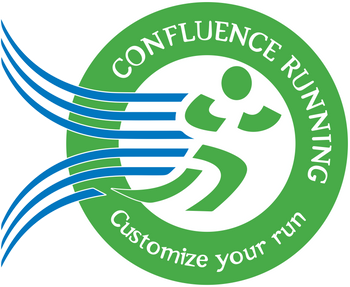Unlock Explosive Fitness: How Plyometrics Enhance Agility, Strength, and Coordination

How Plyometrics Aid in Fitness Adaptation: A Wellness Guide
Plyometrics, a key component in fitness training, are high-intensity, explosive movements designed to enhance athletic performance and overall physical conditioning. This training method is not only versatile but also pivotal in aiding fitness adaptations such as improved strength, coordination, and neuromuscular communication. In this blog post, we’ll explore the benefits, types, and examples of plyometrics, showing how they contribute to your fitness journey.
Check It Out: How Do Plyometrics Aid in Adaptations? | Circuit Training | Overview of Basic Biomechanics
Benefits of Plyometrics for Fitness Adaptation
Plyometrics significantly impact four primary fitness components:
-
Range of Motion: Plyometric exercises challenge the lengthening and contracting abilities of your muscles, improving flexibility and functional movement. For example, exercises like high knees and butt kicks enhance your range of motion by repeatedly extending and contracting key muscle groups.
-
Strength Adaptations: Plyometrics develop muscular power by teaching muscles to contract forcefully. This is achieved through exercises like box jumps or bounds, where landing and rebounding movements build strength in tendons and muscles.
-
Neuromuscular Communication: By strengthening the connection between the central nervous system and muscles, plyometrics improve coordination and reaction times. This enhanced communication enables faster and more precise movements, a critical factor for athletes.
-
Balance and Coordination: Many plyometric exercises require stability and control, training the body to manage side-to-side, forward-and-backward, and vertical motions. Skill-development drills, like falls or single-leg hops, emphasize these balance-related benefits.
Types of Plyometrics
Plyometric exercises can be categorized into three types, each targeting specific aspects of fitness:
1. Explosive Plyometrics
Explosive movements focus on maximizing force and power. Examples include:
- Bounds: Extend your stride while running, aiming to cover the most ground with each step.
- Standing Long Jumps: Jump as far as possible from a standing position, emphasizing upper body and core engagement.
- High Skips: Propel yourself upwards, driving your knees high with each jump, increasing vertical power.
These exercises improve the body's ability to generate maximum force, aiding in sports like sprinting, basketball, and volleyball.
2. Agility Plyometrics
Agility plyometrics prioritize quickness and speed over power, teaching muscles to contract and relax rapidly. Examples include:
- High Knees: Rapidly lift your knees to your chest, emphasizing speed and precision.
- Butt Kicks: Quickly bring your heels to your glutes, focusing on rapid muscle contractions.
- Eggshells (Rapid Fire): Mimic quick foot movements seen in football drills, lifting feet slightly off the ground in rapid succession.
Agility drills are excellent for athletes in sports that demand quick changes in direction, such as soccer or tennis.
3. Skill Development
Though not purely plyometric, skill-development exercises focus on balance and coordination. Examples include:
- Falls: Practice controlled forward leans to develop balance and core strength.
- Single-Leg Hops: Train stability and improve proprioception, crucial for injury prevention.
These drills help refine athletic movements, making them more efficient and controlled.
How Plyometrics Enhance Fitness
By integrating explosive power and agility training, plyometrics develop well-rounded athletic performance. For instance, combining high skips (explosive) with high knees (agility) creates a balance between power and quickness. This combination leads to improved running speed, higher jumps, and enhanced overall athleticism.
Moreover, plyometrics build resilience, reducing the risk of injury by strengthening connective tissues and improving coordination. When paired with proper recovery, nutrition, and sleep, these exercises enable the body to adapt, resulting in lasting fitness improvements.
Conclusion
Plyometrics offer a dynamic and effective approach to fitness adaptation, addressing critical elements like range of motion, strength, neuromuscular communication, and coordination. By incorporating explosive and agility drills into your routine, you’ll unlock new levels of performance and injury prevention. Ready to get started? Add plyometrics to your workouts and experience the difference firsthand!
All HWS Lecture Series Links
| Lectures | Link |
|---|---|
| Mastering SMART Goals | Mastering SMART Goals |
| Concept of Overload | Concept of Overload |
| Periodization Theory | Periodization Theory |
| Muscular Anatomy | Muscular Anatomy |
| Overview of Basic Biomechanics | Overview of Basic Biomechanics |
| Metabolism and Energy Systems | TBD |
| What is VO2 Max? | What is VO2 Max? |
| Overview of Heart Rate Training Zones | TBD |
| Biological Discussion Wrap-Up | TBD |
| Dynamic Footwear Science | Dynamic Footwear Science |
| Basic Nutrition | Basic Nutrition |
| Circuit Training | Circuit Training |
| Pyramid Training | Pyramid Training |
| Compound Sets vs Supersets | Compound Sets vs Supersets |
| Myers Briggs Personality & Fitness | TBD |
| How to Improve Your Motivation in Fitness | TBD |
| Positive & Negative Reinforcement & Punishment | TBD |
| How do Plyometrics Aid in Adaptations? | How do Plyometrics Aid in Adaptations? |
| Enhance Your Fitness with Recovery Techniques | TBD |
Tags for How Plyometrics aid in Fitness Performance
plyometric training benefits, how plyometrics improve fitness, explosive plyometric exercises, agility plyometrics, balance and coordination training, neuromuscular communication exercises, plyometric drills for athletes, types of plyometric exercises, plyometrics for runners, injury prevention with plyometrics, high skips exercise benefits, bounds workout for power, rapid fire agility drill, standing long jump technique, plyometric exercises for strength, fitness adaptation through plyometrics, plyometric workout routine, benefits of skill development drills, core stability with plyometrics, explosive agility combination


